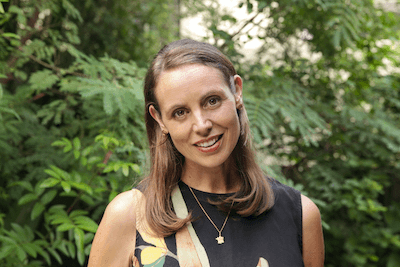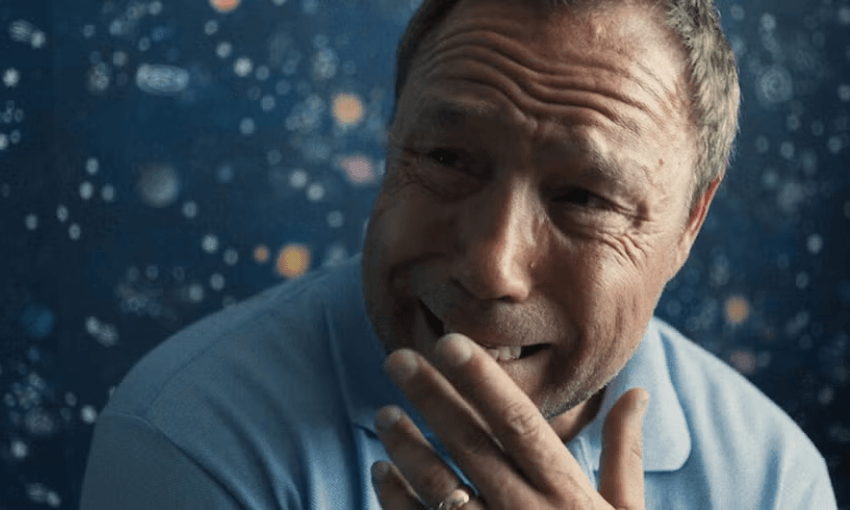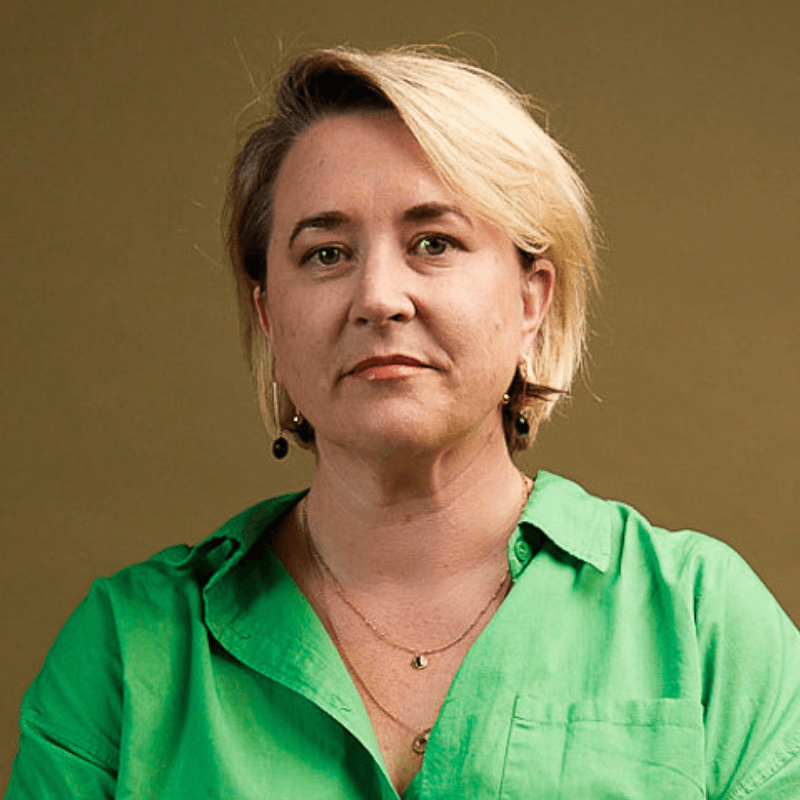Amid rising concerns over the state of paediatric palliative care in New Zealand, Emma Gilkison reflects on the short life of her son Jesús Valentino, who died with the people who loved him best, comfortably and with the care he needed – yet this happened in spite of, not because of, the hospital system.
My waters broke during Diwali, the festival of lights celebrated around the world. More than 50 hours later, my first baby arrived on his due date at 6.58 am. He was placed on my chest, a wet, warm, squirmy bundle. Immediately the sharp distress and flailing desperation of labour evaporated. The world became soft and diffuse.
“Hello, my darling, you’re here. It’s so wonderful to see you.”
Nothing had prepared me for the joy of seeing my son’s face and gazing into his eyes. They were like shining black opals, tiny planets from a far-off universe. He had cheeks like plump pillows and hair like lines of black ink.
My partner Roy took off his shirt so he could cradle our baby against his bare skin. “Son, we love you so much,” he wept.
This might have been a typical scene in a delivery suite, except for our baby’s very atypical condition. He had ectopia cordis, which meant his heart had grown outside of his chest. This condition is usually fatal and affects around seven in one million babies. As we’d prepared for our baby’s birth, we’d also had to prepare for his death.
*
The recent news of Starship Children’s Hospital losing its only paediatric palliative care specialist made me reflect again on our experience in New Zealand’s health system in 2014. As a parent with a baby or child with a terminal illness, your utmost priority is their comfort. You would hope that your hospital offered palliative care to reduce the symptoms of pain and suffering for your child – whether they be physical, mental or emotional. You would hope the public health system provided wraparound support, helping you navigate difficult decisions around end-of-life care and deal with your grief. You would hope that you could get on with enjoying the precious time you have left with your baby or child, without having to battle for their right to a dignified death.
*
We learned of our baby’s condition during a routine ultrasound scan. We saw what looked like a tiny ball bouncing on his chest. The tiny ball was his heart.
“You’re going to be quite the talk around here,” said the sonographer, the words slipping out of her mouth before she could stop them.
We were referred to a maternal foetal medicine team, made up of a neonatologist, obstetrician and specialist midwife. We’d read online that in a handful of cases, surgeons had successfully placed ectopia cordis hearts back inside babies’ chests. I’d found a YouTube video of a little girl called Audrina who’d had this surgery in Texas and survived. She wore pink plastic chest armour while the skin graft over her heart healed.
The specialist team agreed to refer us to a paediatric cardiologist at Starship, to find out if surgery would be possible for our baby. We had to wait until I was almost five months’ pregnant for the appointment, when our baby’s heart was big enough to be assessed by scan. The doctor delivered his findings in a soft voice. “There are other structural problems with your son’s heart. Surgery won’t be possible to fix them all. Your baby will die at birth or shortly after.”
On hearing this news, I felt as if I’d been struck hard with a blunt object. Initially, I thought the rest of my pregnancy would feel like a prolonged sad farewell. However, once I’d come to terms with the prognosis, I decided I wanted to cherish the time I had with my baby, even while he was in the womb. This was a crash course in living in the present moment.
Like other families with babies or children who are going to die, we got creative with how to do special things with our son. During my pregnancy, Roy would sing to our son inside my belly every morning. We took him to the opera. When I was 35 weeks’ pregnant, I went swimming with whales in Tonga. As I swam in the ocean, my baby swam inside my body. I wasn’t eligible for travel insurance and the specialist team at the hospital advised against the trip, but I wanted to make as many happy memories with my baby as possible.
We met with the specialist team once a month during my pregnancy. These meetings presented some challenges. We had questions about what would happen if our baby was born healthier than expected. I’d read of a case in India where a baby with an ectopia cordis heart lived for a week. This scenario was dismissed as unlikely.
As my due date approached, there was no plan for our baby’s care except to give him morphine if he needed it. “If he’s having trouble breathing, would you give him oxygen?” I asked. I was told there would be no oxygen or resuscitation, no heroics to prolong a life that couldn’t be saved. A palliative care doctor was supposed to come along to one of these meetings, but we never saw them.
Meanwhile, a kind priest we knew had introduced us to a paediatric surgeon who had offered to volunteer his time and be on call when our baby was born. He would apply a special dressing to protect his heart. He wanted to try using an enclosed plastic surgical bag to protect it, something which as far as he knew, hadn’t been tried before.
Through another chance encounter, my mother met the president of SANDS, an organisation that supports families through baby loss. SANDS volunteers then met with me every month or two and offered a wealth of information to help prepare for our baby’s birth and death.
Given what we had been told by the neonatologist, I had prepared myself for my son to die shortly after delivery. Yet one hour turned to two hours, two hours turned into a whole day, and the next morning our baby was still with us. To the amazement of everyone, he was doing all the usual things babies do. Guzzling down milk, drifting into deep slumbers, crying in protest when his nappy was changed.
Because no interventions were being carried out, he was not in an incubator or neonatal ward, he was with us in an ordinary postnatal room. No one knew exactly why he was doing so well, when his heart shouldn’t have been able to effectively pump oxygenated blood around his body. It was thought he was using a heart vessel to transport oxygenated blood that usually only functions when babies are in the womb. Perhaps the plastic surgical bag dressing was also helping to maintain his heart’s condition.
My partner Roy hails from Peru and wanted to call our son Jesús, a common name in South America. I worried that people would think we were declaring our son to be the messiah. I liked the name Valentino because I’d found out I was pregnant on Valentine’s Day. Eventually Roy talked me around and we agreed on Jesús Valentino (JV for short). An exceptional name for a boy with an exceptional heart.
On the second day of our son’s life, we met Tisha, a community neonatal nurse. She had a warm, friendly presence and we liked her immediately. She began telling us about symptoms to look out for if our baby was in distress and needed pain relief. As crying is normal behaviour for babies, I’d been worried I wouldn’t know how to read the signs. I wanted nothing more than for our baby to be comfortable and as nobody else had talked to us about this, I felt Tisha was an ally.
She then asked if we’d thought about going home in the next day or so. I was taken aback. Nothing we’d been told in our specialist meetings had suggested we prepare for taking JV home and we had none of the things we’d need. No bassinet or bedding or baby bath. Most of all, I didn’t want to be far away from the midwives and neonatologist who could help us with his care. I didn’t want the responsibility of knowing when and how much morphine to administer. My knee-jerk reaction was a firm no.
I would later read in the hospital notes, we had been expected to leave. Perhaps in other circumstances, or if I had been less assertive about my wishes, we would have been made to.
Instead, we were allowed to stay on in hospital. Tisha took our family under her wing and offered to volunteer her time on the weekend so we could take JV on outings. We needed her as a medical escort in case he died while we were not in hospital. We needed a special letter from the hospital to say that JV couldn’t be strapped in a carseat, in case we were stopped by police.
On our “big day out” when JV was one week old, we visited my Buddhist centre for chanting, then attended a Catholic mass for All Souls Day. On another outing, we walked in a blissful daze in the home of compassion gardens, profuse with flowers, vegetables, bumble bees, birds, butterflies, rabbits even. Another day, we met a tuatara at the wildlife sanctuary Zealandia. Tisha also happened to be a great amateur photographer. She photographed our excursions and later presented us with a beautiful album.
These were days of miracle and wonder. The opportunity to do things we’d never dreamed of with our baby was incredibly special. Our wider community was able to meet JV too. They would all be the keepers of his memory.
When JV was a week old, our neonatologist had a stroke of genius and requested that JV be admitted to Mary Potter Hospice. This was a much better environment for us to be in than the hospital. We had a bigger room, a proper bed for Roy to sleep in, French doors that opened out onto a sunny deck. There was even a massage therapist, a music therapist and staff were always knocking on our door asking if we’d like a slice of chocolate cake or a cup of tea.
I hadn’t realised it at the time, but JV was the first baby to ever have been admitted to this hospice and it had taken quite a lot of wrangling behind the scenes to make it happen. Currently, whether a baby or child is able to be cared for in a hospice in New Zealand varies around the country and depends on a paediatric team being available to work alongside hospice staff.
As JV neared his second week of life, we noticed a change in his health as his heart struggled to keep performing the clever tricks it was using to sustain him. His skin was sometimes tinged with blue, sometimes red and blotchy, a sign that oxygen wasn’t circulating properly around his body. He seemed fussier. He needed morphine in higher doses.
The last day of JV’s life was sunny. The air was sweet with the smell of spring blossom. Roy and I were alone with our son, which was unusual as there had been a constant stream of people with us. He died peacefully in my arms aged 15½ days old. The doctor who came shortly after commented on how beautifully he’d died.
All babies and children with a terminal illness deserve to die this way – with the people who love them best, comfortable and with the care they need. Yet, the excellent palliative care our baby and family received happened in spite of, not because of, the hospital system. It was mostly thanks to the altruism of some exceptional people who were willing to help.
What if we hadn’t been introduced to the paediatric surgeon who volunteered his time and developed the special dressing for our son’s heart (this was later the subject of a paper in the British medical journal)? What if my mother hadn’t met the president of SANDS and we hadn’t been supported by them to prepare for our baby’s death? What if Tisha hadn’t been our exceptional neonatal nurse who was willing to give up time on her weekend to take us on special outings? What if a request had never been made for our baby to be the first to be admitted to Mary Potter Hospice, where adults are offered gold-standard palliative care? What if we didn’t have all these wonderful memories to counterbalance the grief of losing our first baby? What if, alongside grief, we also had to deal with the stress and trauma of a hospital system that hadn’t supported our baby in his final days and hours?
Luck and privilege should never play a part in the care that a baby or child receives at the end of their life. The family of that baby or child will carry the memories of this time forever, etched in pokerwork on their hearts. A health system with gaping holes in paediatric palliative care can’t show dying babies and children the love they deserve.
Emma has written a book about her baby’s life and death, The Heart of Jesús Valentino, available through Awa Press. You can read an excerpt here.





